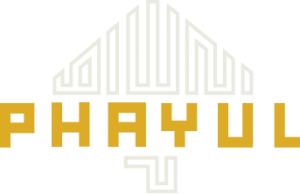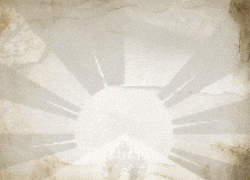 Remains, Other Artifacts on Tour Offer Extraordinary Perspective on 2,500-Year-Old Faith
Remains, Other Artifacts on Tour Offer Extraordinary Perspective on 2,500-Year-Old Faith
By Bill Broadway
Washington Post Staff Writer
Washingtonians will have the rare opportunity next week to view remains of Siddhartha Gautama, the Buddha, founder 2,500 years ago of one of the world’s great religions. Those who do might be in for a surprise.
Unlike most religious relics, typically pieces of saints’ bones, the remains of great Buddhist teachers include tiny pearl-like objects known as ringsel. These crystalline beads are said to be formed when a Buddhist master is cremated and to settle into the shape of a heart, conch, flower or other object. Buddhists believe that the presence of ringsel proves the teacher achieved spiritual purity and that those who view the ringsel can be spiritually transformed.
Ringsel, bone fragments and fossilized blood thought to be that of Gautama, also called Shakyamuni Buddha, and other Buddhist masters will be displayed Oct. 25 and 26 at Giac Hoang Temple in Northwest Washington.
Can viewers be assured that the relics are genuine? That’s always a concern, said Tenzin L.S. Priyadarshi Shukla, Buddhist chaplain and visiting scholar at the Massachusetts Institute of Technology, where the relics were exhibited last month in conjunction with a visit by the Dalai Lama.
Shukla, who blessed visitors by placing containers of relics to their heads, said he questions the authenticity of some items in the Heart Shrine Relics Tour exhibit, organized by the Maitreya Project in northern India.
But “the relics of Shakyamuni seemed to be genuine,” said the monk, who helped build stupas (monuments) in India and Nepal that hold other relics of Buddha. The Buddha relics in the exhibit “matched the appearance of relics elsewhere,” he said.
Temples throughout the world own relics of the Buddha, and on special occasions the monks bring them out for public display. But putting the relics on tour is rare, and there likely has never been an organized tour with as many relics as this one, Shukla said.
Seeing the relics “is an auspicious thing,” he said. “In the absence of the living Buddha, these relics are seen to be the living Buddha.”
Jan Willis, a professor at Wesleyan University and a prominent scholar-practitioner of Tibetan Buddhism, said non-Buddhists might be mystified that a religion that teaches the importance of transcending the material world also emphasizes the veneration of relics.
But Buddhist relics, when placed in shrines or other holy places, provide “sites for devotion,” places where a believer can feel close to a teacher who found enlightenment in his lifetime but chose to remain in the world to help others, Willis said.
The Heart Shrine Relics are so named because they will be placed permanently in the heart area of a 500-foot statue to be constructed in Kushinagar, a town in northern India where Shakyamuni Buddha died. The massive bronze statue will represent the Maitreya, or “loving kindness,” Buddha, an enlightened being of the future who Buddhists believe will bring world peace.
In addition to remains of Shakyamuni Buddha, the exhibit includes relics of his disciples Ananda, Sariputra and Maudgalyayana, and masters from Indian, Chinese and Tibetan traditions. Most of the relics — about 1,000, of 20 masters in all — are kept in small gold urns with glass tops and will be displayed in glass cases.
Some relics were donated by museums, monasteries and individuals, including the Dalai Lama, according to the Maitreya Project Web site, www.maitreyaproject.org. A few were salvaged from statues destroyed when China invaded Tibet half a century ago.
The Chinese soldiers were unaware that relics and ancient texts had been enshrined in the statues for hundreds of years, and monks were able to sift through the rubble and retrieve them, Shukla said.
“We are extremely honored they picked us as the [mid-Atlantic] venue,” said Nhyguyen Ngoc Bich, a founding member in the mid-1970s of Giac Hoang, the oldest and largest Vietnamese Buddhist temple in the Washington area.
Bich said the temple is planning for 10,000 exhibit visitors, many of whom told organizers that they will be coming by bus from Philadelphia, Richmond and other cities throughout the region. Projections are based on exhibit attendance in Los Angeles and other locations with large Asian immigrant populations.
Bich and representatives of other local Buddhist groups say there is no widely accepted estimate of the Washington area’s Buddhist population, which includes immigrants from a range of Asian countries.
Bich estimated that 75 percent of the area’s 50,000 Vietnamese Americans are Buddhist. The number of Chinese, Korean and Filipino Buddhists each could exceed that of Vietnamese Buddhists, he said.
Bich said Buddhists who view the relics will likely demonstrate a wide range of devotion, depending on individual piety and ethnic and cultural background. Some will bring rosaries and pray before the relics, he said.
Everyone is invited, including those of other faiths. “We want to expose people who may not be Buddhist to take a chance to see our church, our temple, and learn a little bit about our religion,” Bich said.
To accommodate the anticipated crowds, visitors will be allowed only a few minutes with the exhibit, he said. Those who want to receive a blessing will be able to do so; monks from various Buddhist traditions — Cambodian, Laotian, Thai, Chinese, Tibetan — will be available on a rotating basis to give blessings.
The worldwide tour, which began in 2001, will continue until 2008, when the Maitreya Buddha is scheduled for completion. The relics have been displayed at more than 100 sites in Asia, Canada and the United States. This weekend, they are in New York; later, they will travel to Charlotte, Atlanta and Orlando.
The Heart Shrine Relics will be exhibited from 10 a.m. to 6 p.m. Oct. 25 and 26 at Giac Hoang Temple, 5401 16th St. NW. Free. Visitors are encouraged to use Metro. For information, go to the Web site www.dcbuddharelics.org.









